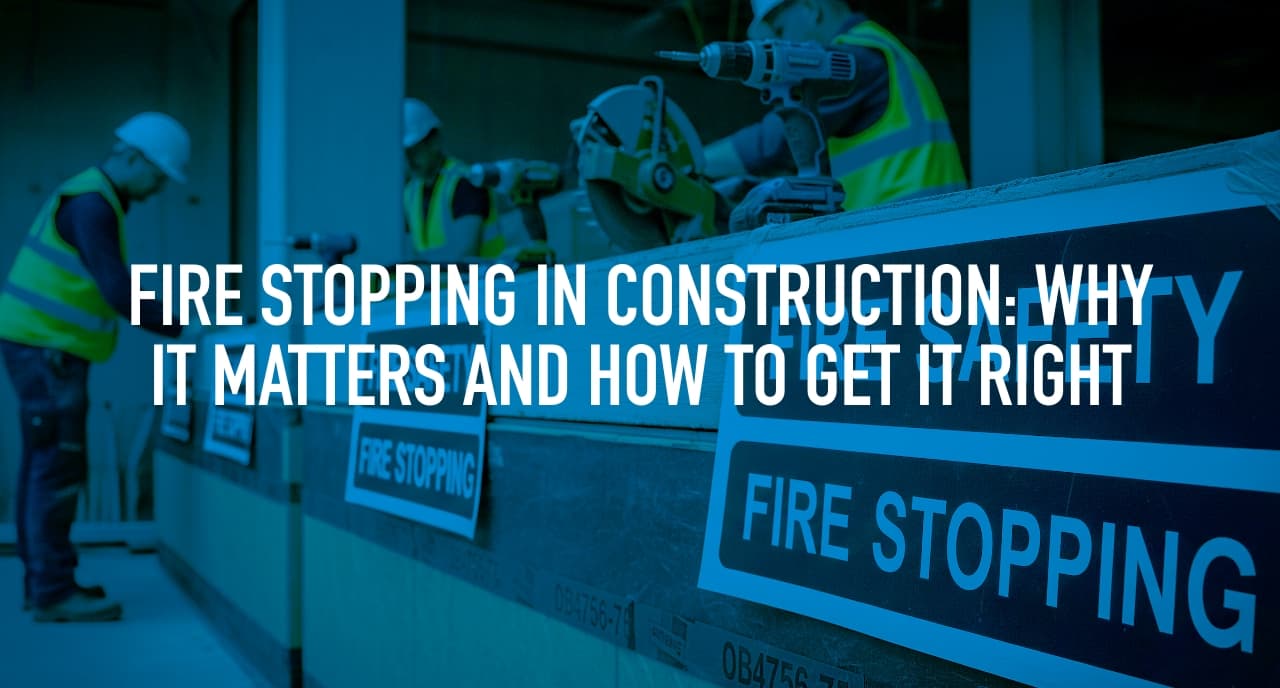Resources
Case studies
Videos
Sample reports
Free inspection templates
Learn
Blog
Product brochure
Training pack
Get the app
Download the app
Changelog
2025-08-18 | 4 min read
Fire Stopping in Construction: Why It Matters and How to Get It Right

Fire safety is non-negotiable in construction, and fire stopping plays a critical role in ensuring that buildings are protected long after the last contractor leaves site. But too often, fire stopping is treated as a tick-box exercise, rather than the essential safety mechanism it is.
In this blog, we’ll break down what fire stopping is, why it’s vital to get it right first time, and how contractors can reduce fire risk, prevent rework, and maintain compliance, without slowing the job down.

What is Fire Stopping?
Fire stopping refers to the process of sealing joints, gaps, and service penetrations in walls and floors to prevent the spread of fire and smoke. It’s a key part of a building’s passive fire protection strategy, designed to contain fire within a compartment for a defined period, allowing safe evacuation and reducing property damage.
It includes materials and systems like:
- Intumescent sealants
- Fire collars and wraps
- Fire-resistant boards
- Fire-rated pipe sleeves and barriers
These components work together to maintain the fire resistance rating of walls, floors, and ceilings once they’re penetrated by services such as pipes, cables, and ducts.

Why Fire Stopping Matters
The consequences of poor fire stopping aren’t just technical, they’re life-threatening.
Here’s why it’s so critical:
- Fire containment saves lives: In the event of a fire, correctly installed fire stopping prevents flames and smoke from spreading rapidly, buying time for occupants to escape and for fire services to intervene.
- It’s a legal requirement: Fire stopping is a regulatory necessity under Approved Document B of UK Building Regulations. Non-compliance can lead to project delays, fines, or in worst cases, prosecution.
- It reduces rework and delays: If not installed, or documented, properly, fire stopping is one of the most common causes of rework. Inspectors or main contractors will require fixes or remediation before sign-off.
- It protects your reputation: Subcontractors that treat fire stopping with care, clarity, and compliance stand out, and win more work.
Common Fire Stopping Challenges on Site
Despite its importance, fire stopping is often poorly managed on site. Here’s where things typically go wrong:
- Lack of coordination: Trades working in isolation often install services without considering fire stopping requirements, leading to incomplete or inconsistent application.
- Missing documentation: Fire stopping needs to be recorded, what product was used, where, and when. Without proper sign-off and photographic evidence, your work may not pass inspection.
- Untrained labour: Incorrect materials or application methods can render fire stopping completely ineffective.
- Poor visibility for project managers: Without a digital audit trail, there’s no clear picture of what’s been done, what’s outstanding, or what needs to be remediated.

How to Get Fire Stopping Right — First Time
Here are five practical ways contractors can improve their fire stopping processes:
- Plan early: Fire stopping should be factored into your installation strategy from day one, not left to the end of the job.
- Use the right materials: Only approved fire stopping products should be used, with manufacturer guidelines followed to the letter.
- Train your team: Ensure operatives know the importance of fire stopping and how to install systems correctly.
- Track and document every step: From photos to sign-offs, keeping a digital record is essential for compliance and quality assurance.
- Audit as you go: Don’t wait for handover to find fire stopping issues. Use real-time checks to stay on top of the work.

How Insite Helps You Stay Compliant with Fire Safety
Insite makes it simple to manage fire stopping tasks across your sites, giving your team the tools they need to install correctly, track progress and record compliance all in one place.
- Digital checklists – Use pre-built or custom Q&A forms to guide operatives through fire-stopping installation requirements, step by step.
- Photo capture with location data – Capture evidence of every penetration and seal, linked to the specific location.
- Instant sign-off – Supervisors can review and sign off fire fire-stopping work in real-time, with a full audit trail.
- Dashboard visibility – Track what’s been completed and what’s outstanding across all your live projects.
- Evidence for handover – Export a complete record for your client or main contractor, proving compliance and quality.

Get started with Insite
If you’re looking for a solution, Insite is here for you. Book a demo or sign up for a trial today. Get in contact for further information we’re here to help and will be happy to answer any questions you may have.